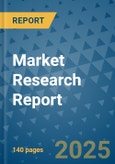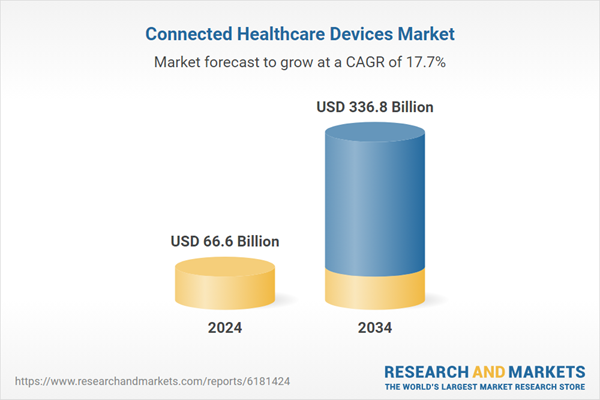The steady rise in chronic health conditions such as hypertension, diabetes, and cardiovascular disorders is one of the primary drivers behind this growth. These long-term diseases demand ongoing monitoring, which connected medical devices like ECG patches, glucose monitors, and smart blood pressure trackers are uniquely suited to provide. The advancement of IoT, AI, and sensor technologies has enhanced these devices' efficiency, accuracy, and integration capabilities. Additionally, the rapid adoption of telehealth has expanded the role of connected devices in routine care, particularly in remote regions where access to clinical services is limited. These devices allow healthcare providers to monitor patient vitals in real time, improving outcomes and reducing hospitalizations. The combination of improved digital infrastructure and the growing push toward data-centric healthcare delivery continues to fuel demand for connected medical technologies that align with modern care delivery models. Connected healthcare devices, unlike traditional tools, can share and receive patient data securely over digital networks.
The Zigbee protocol segment secured a 31% share in 2024 and is forecasted to reach USD 100.9 billion by 2034, with a CAGR of 17.3%. Zigbee’s energy-efficient design supports longer battery life for devices like wearable monitors, sensors, and diagnostic tools. Its suitability for low-power, always-on medical devices used in homes and clinics makes it a preferred technology, especially for patients requiring continuous tracking over extended periods. This enables better compliance, reduced maintenance, and seamless monitoring.
The remote patient monitoring (RPM) segment generated USD 35 billion in 2024. Continuous innovation in biosensors, wearables, and mobile integration has made RPM more efficient and widely accessible. Modern systems now support multi-vital monitoring and provide real-time insights through cloud-based platforms. These developments enhance clinical decision-making and patient involvement, which continues to drive the segment’s strong market performance.
North America Connected Healthcare Devices Market accounted for a 51.4% share in 2024, leading global adoption of digital health technologies. The region’s healthcare system increasingly depends on connected medical solutions to support chronic disease management and real-time diagnostics. Strong investment in health IT infrastructure and the growing popularity of mobile health tools enable greater interoperability and data sharing, allowing providers to offer timely, remote care at scale.
Key companies active in the Global Connected Healthcare Devices Market include Vivify Health, Honeywell International, Medtronic, Siemens Healthineers, Dexcom, Fitbit (Google), Abbott Laboratories, Omron Corporation, Stanley Healthcare, CareCloud, Garmin, NXP Semiconductors, Allscripts, Koninklijke Philips, GE Healthcare, and AliveCor. To secure their positions, leading companies are actively expanding their product lines with AI-enabled and sensor-integrated devices to address a wide range of clinical needs. Firms are investing in R&D to create lightweight, portable, and user-friendly solutions with enhanced battery life and secure data transmission. Strategic partnerships with hospitals, health tech firms, and insurers allow seamless integration into existing clinical workflows. Companies are also enhancing their global supply chains and establishing regional distribution networks to serve emerging markets and increase accessibility.
Comprehensive Market Analysis and Forecast
- Industry trends, key growth drivers, challenges, future opportunities, and regulatory landscape
- Competitive landscape with Porter’s Five Forces and PESTEL analysis
- Market size, segmentation, and regional forecasts
- In-depth company profiles, business strategies, financial insights, and SWOT analysis
This product will be delivered within 2-4 business days.
Table of Contents
Companies Mentioned
The companies profiled in this Connected Healthcare Devices market report include:- Abbott Laboratories
- AliveCor
- Allscripts
- CareCloud
- Dexcom
- Fitbit (Google)
- Garmin
- GE Healthcare
- Honeywell International
- Koninklijke Philips
- Medtronic
- NXP Semiconductors
- Omron Corporation
- Siemens Healthineers
- Stanley Healthcare
- Vivify Health
Table Information
| Report Attribute | Details |
|---|---|
| No. of Pages | 140 |
| Published | October 2025 |
| Forecast Period | 2024 - 2034 |
| Estimated Market Value ( USD | $ 66.6 Billion |
| Forecasted Market Value ( USD | $ 336.8 Billion |
| Compound Annual Growth Rate | 17.7% |
| Regions Covered | Global |
| No. of Companies Mentioned | 17 |









